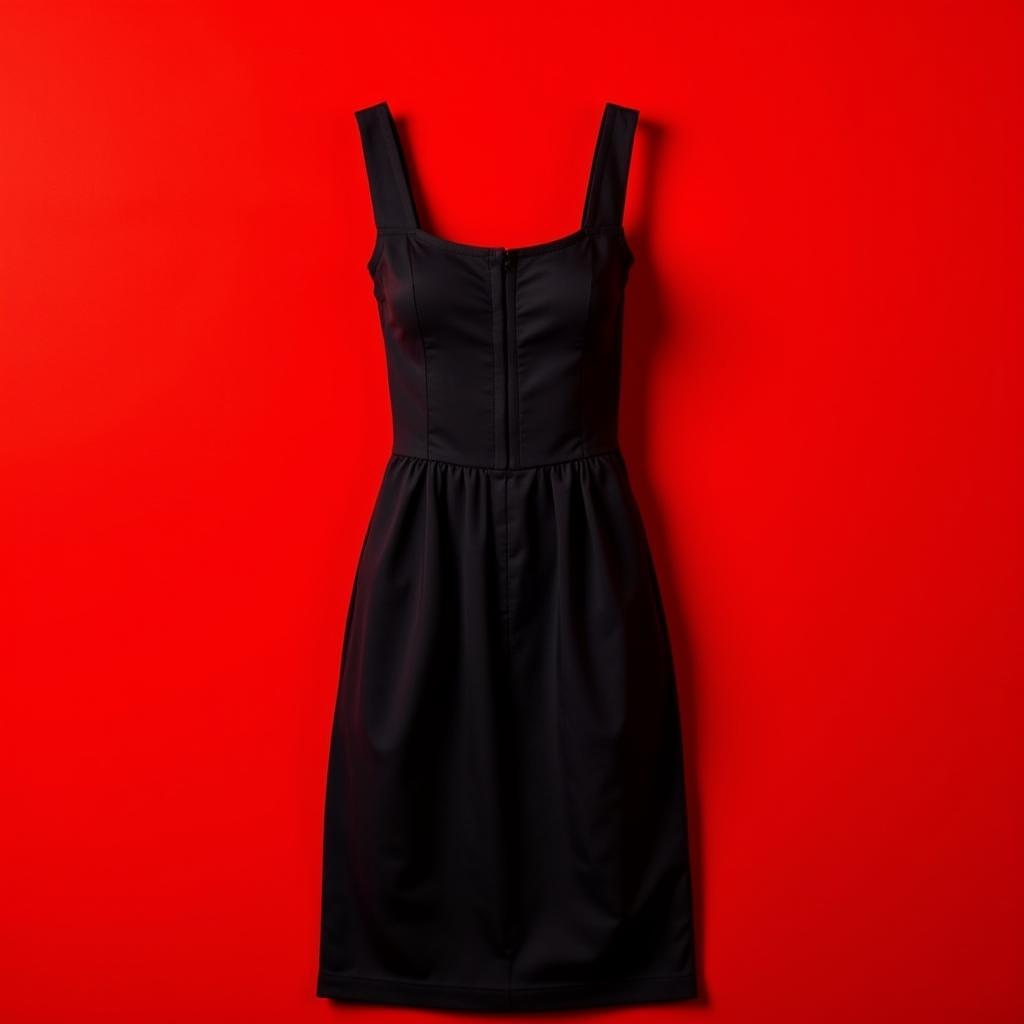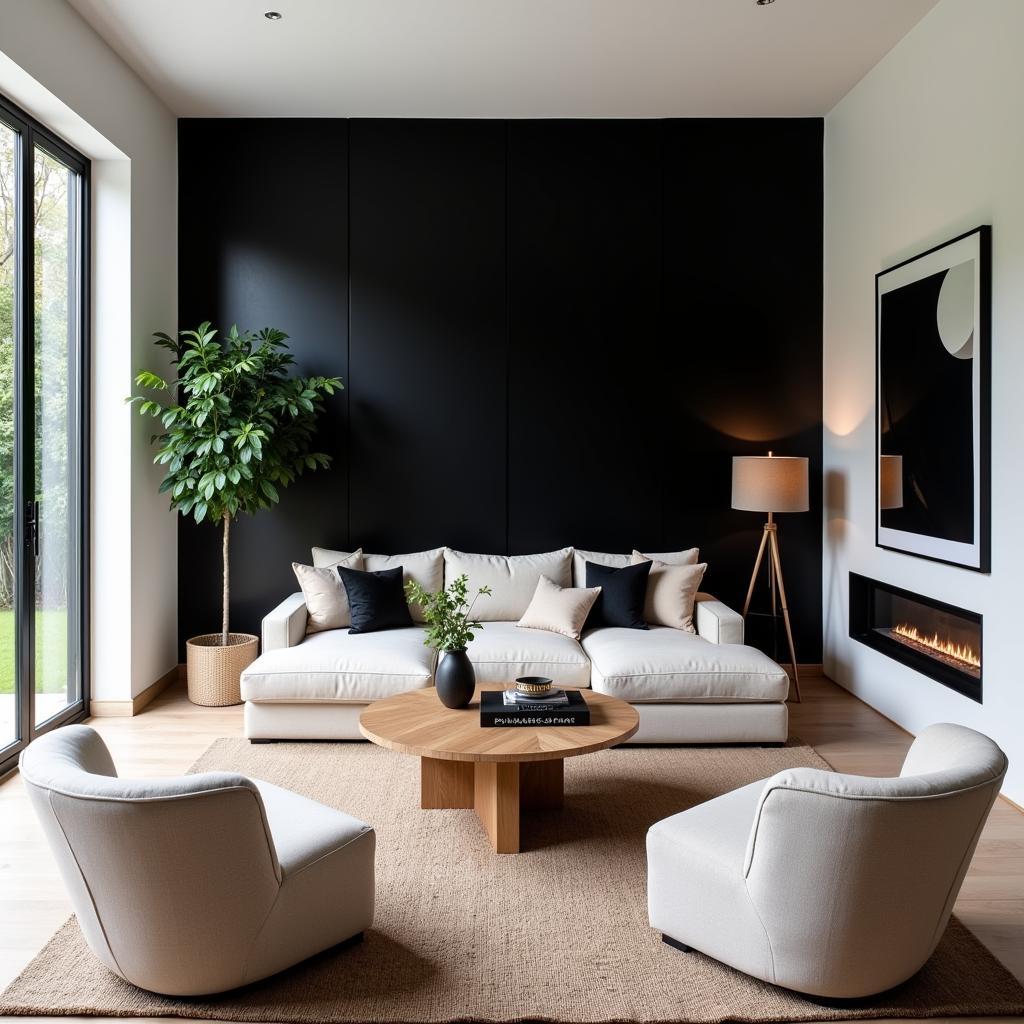Black: a color shrouded in mystery, sophistication, and a whole lot of debate. Is it a neutral? Does it play well with others? Let’s dive into the fascinating world of black and explore its role in the color spectrum.
As a leading color expert at Color Box Hanoi, I often get asked about black’s neutrality. It’s a question that sparks many discussions, even among seasoned designers. The truth is, the answer isn’t as black and white (pun intended) as you might think. While technically not a true neutral in the traditional sense, black functions as a neutral in the design world. It’s a powerful and versatile color that can ground a palette, create contrast, and add a touch of drama.
Understanding Color Neutrality
Before we delve deeper into the question, “Is black considered a neutral color?”, let’s define what we mean by “neutral.” In the purest sense, neutrals are colors that don’t compete with other hues. Think of classic examples like white, beige, gray, brown, and even taupe. They provide a backdrop that allows other colors to shine. These colors often have undertones that can lean warm or cool, but they generally don’t overpower a space. Thinking about what color should the bride’s mother wear? Neutrals are often a safe and elegant choice.
After understanding color theory basics, you might want to delve into more specific color combinations. For instance, if you’re curious about what color shirt goes with orange shorts, exploring color palettes and the role of neutrals can be incredibly helpful.
Black: A Functional Neutral
While black isn’t technically a neutral in the way beige or gray is, it’s considered a functional neutral. Its ability to blend seamlessly with almost any color, much like a true neutral, earns it this distinction. Black provides a solid foundation, anchoring brighter colors and allowing them to pop. Imagine a vibrant red dress against a black backdrop; the contrast makes the red even more striking. This is one of the reasons black is a staple in fashion, interior design, and even graphic design.
 Black dress on a red background showcasing contrast
Black dress on a red background showcasing contrast
The Power of Black in Design
Black can be used in a variety of design applications to create different effects. From adding a touch of elegance to a room to creating a sense of mystery and depth, black offers a diverse range of possibilities. For instance, in interior design, black can ground a space, especially when paired with lighter colors. A black accent wall can create a focal point, while black furniture can add a touch of sophistication. How about figuring out what color do pink and black make? They create a striking contrast and a surprisingly versatile color combination.
When Black Isn’t So Neutral
While black is often used as a neutral, there are instances where it can be overwhelming. Too much black in a small space can make it feel cramped and oppressive. Similarly, using black in areas with little natural light can make the space feel dark and uninviting. It’s crucial to use black strategically, balancing it with other colors and considering the overall impact on the space. Knowing how to spell the color fuchsia and how to incorporate it with black can create a visually appealing contrast.
 Black accent wall in a living room with natural light
Black accent wall in a living room with natural light
Black and Its Psychological Impact
Black is often associated with power, elegance, and sophistication. It can also represent mystery, rebellion, and even mourning in different cultures. This psychological impact can be leveraged in design. For example, a black suit can project an image of authority, while a black dress can convey elegance. Knowing what color is raisin might help you choose complementary colors or accents that work well with darker hues like black.
Expert Insights on Black
Renowned color psychologist, Dr. Anya Sharma, notes, “Black is a complex color. Its perceived neutrality stems from its ability to recede visually, allowing other colors to take center stage. However, it’s essential to consider its psychological weight and use it judiciously.”
Another expert, interior designer, Mr. Jean-Pierre Dubois, adds, “Black is a timeless classic. Its versatility allows it to be incorporated into various design styles, from minimalist to maximalist. The key is to balance its intensity with lighter elements.”
Conclusion: Embracing Black’s Versatility
So, is black considered a neutral color? While not a true neutral in the traditional sense, black acts as a powerful functional neutral, offering versatility and impact. By understanding its properties and using it strategically, you can harness the power of black to create truly stunning spaces and designs.
FAQ
-
Can I use black in a small room?
Yes, but use it sparingly and balance it with lighter colors to avoid making the space feel cramped. -
What colors pair well with black?
Black pairs well with almost any color, but it creates particularly striking contrasts with bright hues like red, yellow, and pink. -
Is black suitable for all design styles?
Yes, black can be incorporated into various design styles, from minimalist to maximalist. -
Can black be used as a primary color in a room?
Yes, but ensure adequate lighting and balance it with lighter accents to prevent the space from feeling too dark. -
What is the psychological impact of black?
Black is often associated with power, elegance, sophistication, mystery, and rebellion. -
How can I use black effectively in my home?
Use it strategically for accent walls, furniture, or accessories to create focal points and add depth. -
Is black considered a neutral in fashion?
Yes, black is considered a staple neutral in fashion, often used as a backdrop to highlight other colors and accessories.
Need Help with Your Color Choices?
Contact Color Box Hanoi today! We can help you navigate the world of color and create the perfect palette for your home.
Phone: 0373298888
Email: [email protected]
Address: 86 Cau Giay, Hanoi
We have a 24/7 customer service team ready to assist you.

